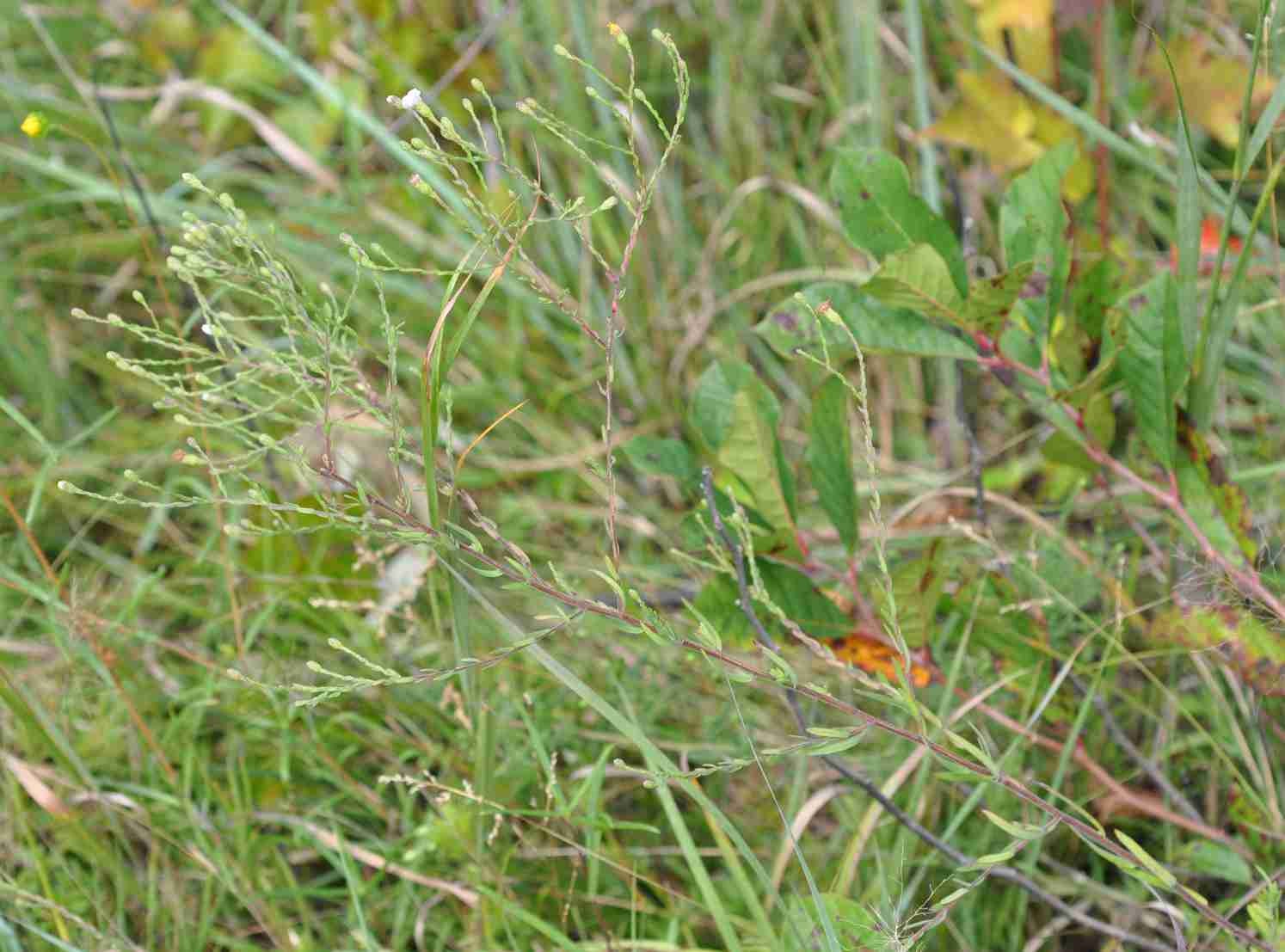May Prairie Aster, Estes's Aster
Symphyotrichum estesii Semple is the recently described, very rare virguloid aster native to the May Prairie State Natural Area in Coffee Co., Tennessee, a unique unplowed, open, sunny, seasonally wet (hydroxeric) grassland that harbours perhaps more rare species than any other site in the state (Semple 2019). The species is similar to Symphyotrichum fontinale native to Florida and southwestern Georgia. The species is distinguished by its 5–6.4 mm high involucres, white rays, and numerous bracts on long peduncles. Symphyotrichum estesii was unknown in 2006 and was not included in Flora North America (Brouillet et al. 2006). The species is of conservation concern, although it grows in a protected habitat.

The species is an octaploid with x=5 (reported in the protologue as 2n=ca.20II).
The species is named in honour of its discoverer, Dwayne Estes, professor of biology and herbarium director at Austin Peay State University, and executive director and co-founder of the Southeastern Grasslands Initiative (2019).
Detailed description from protologue: Perennials, colonial from long rhizomes. Stems 30–85 cm, solitary or several, erect (green with some light to reddish brown, somewhat striate, proximally moderately to densely hispidulo-strigillose, distally moderately to densely hispidulo-strigillose, sometimes sparsely stipitate-glandular. Leaves green, firm, margins sparsely serrate distally to entire, faces sparsely to densely short strigoso-scabrous, hairs usually denser and longer on abaxial veins, sometimes sparsely stipitate-glandular, usually curving upward from patent base; basal rosettes at base of stem absent at flowering; lower stem leaves oblanceolate, 50–66 × 6–9 mm, bases attenuate, margins entire to distally serrate, short scabrous, apices obtuse, short-mucronate; lower cauline often withering by flowering, sessile, blades oblanceolate to linear oblanceolate, 32–68 × 3–11 mm, margins distally shallowly serrate to entire, scabrellous, apices spinulose-mucronate; mid stem leaves sessile, blades lanceolate or oblanceolate to oblong-lanceolate, 18–45 × 2–7 mm, reduced distally and becoming bractlike in inflorescence, bases rounded, margins scabrous, apices acute to white-mucronulate or -subspinulose, faces sometimes shiny, minutely gland-dotted; branch leaves much reduced, 1–7 × 0.5–3 mm. Heads (5–50) in wide to narrow, paniculiform arrays, branches ascending to widely spreading, densely small-leaved. Peduncles ascending, rarely divergent, 1–5 cm, sparsely to densely strigoso-hirsute, sparsely stipitate-glandular, bracts dense, curving upward from patent base, narrowly oblong to broadly oblanceolate, mostly 1.5–2.5(–5) × 0.5–1(–2.5) mm, spinulose-mucronate, sparsely to moderately strigilloso-scabrous, sparsely minutely stipitate-glandular, grading into phyllaries. Involucres cylindro-campanulate, 5–6.4 mm. Phyllaries in 4–5 series (appressed), oblong or oblanceolate, unequal, bases indurate, glabrate to sparsely strigose, sparsely minutely stipitate-glandular, not anthocyanotic, margins hyaline, scarious, ciliate or ciliolate, green zones narrowly oblanceolate to obrhombic (inner), apices erect, acute to acuminate, mucronulate to apiculate (inner). Rays 9–17, laminae 2–4.5 × 0.6–1.2 mm, white. Disc florets 12–28; corollas yellow turning reddish purple to brownish, 3.6–5 mm, lobes triangular, 0.4–0.7 mm. Cypselae tan, obovoid-fusiform, slightly compressed, 1.9–2.3 mm, 4–6-nerved, faces sparsely strigillose to glabrescent; pappi 4.5–5.5 mm, the longest inner very weakly clavate.
Last revised 16 May 2025 by J.C. Semple
© 2025 J.C. Semple, including all photographs unless otherwise indicated
1-8. Symphyotrichum estesi, Semple et al. 11858. 1. May Prairie and botanists, 12 Sep 2012, Tennessee. 2. Dwayne Estes. 3. Shoot and rhizomes. 4. Stem. 5. Large inflorescence 6. Small inflorescence. 7. involucre. 8. Florets.
Semple, J.C. 2019. Symphyotrichum estesii (Astearaceae: Astereae), a new species of virguloid aster from Tennessee. Phytoneuron 2019-36: 1-10.
Southeast Grasslands Initiative. 2019. <https://www.segrasslands.org/>















